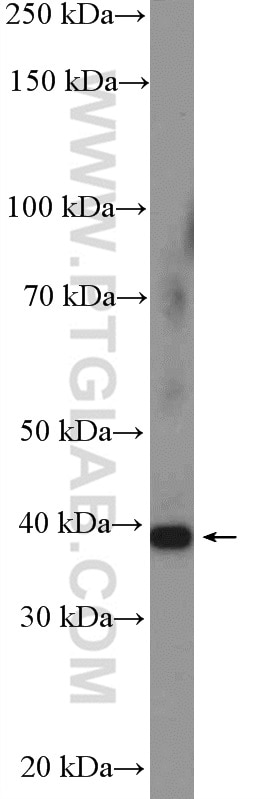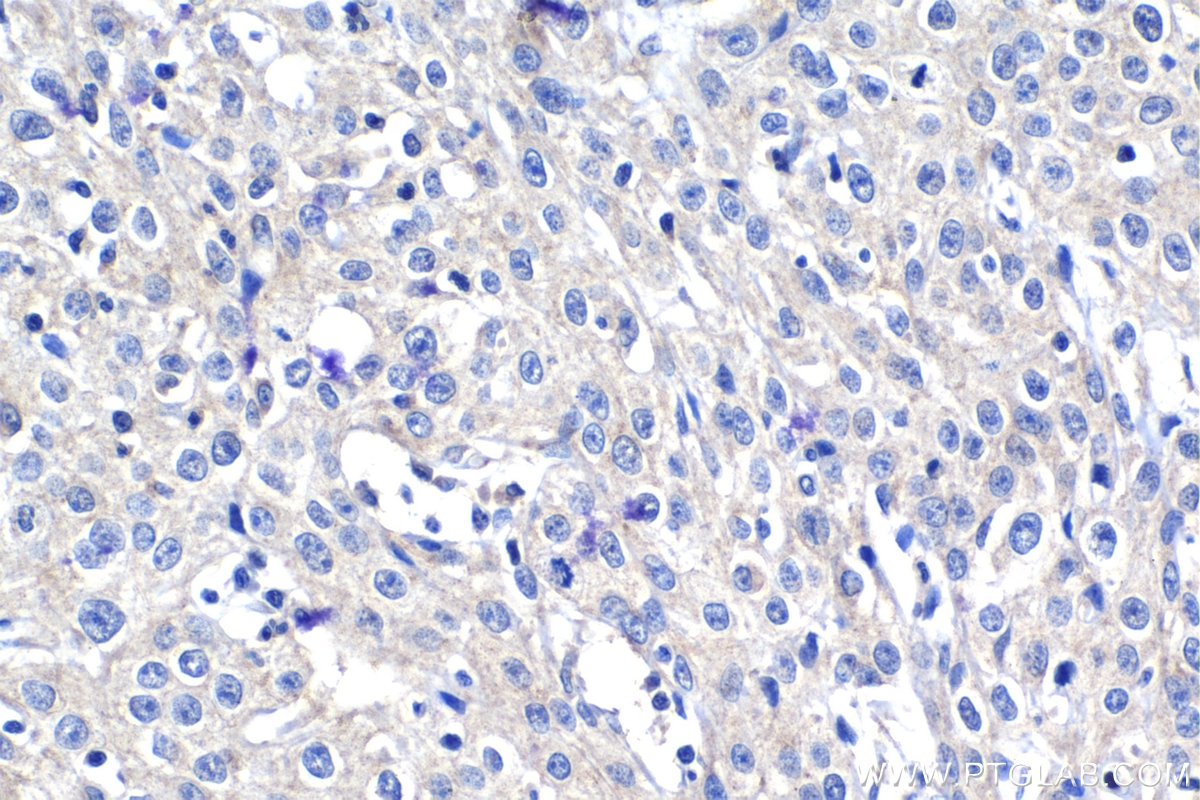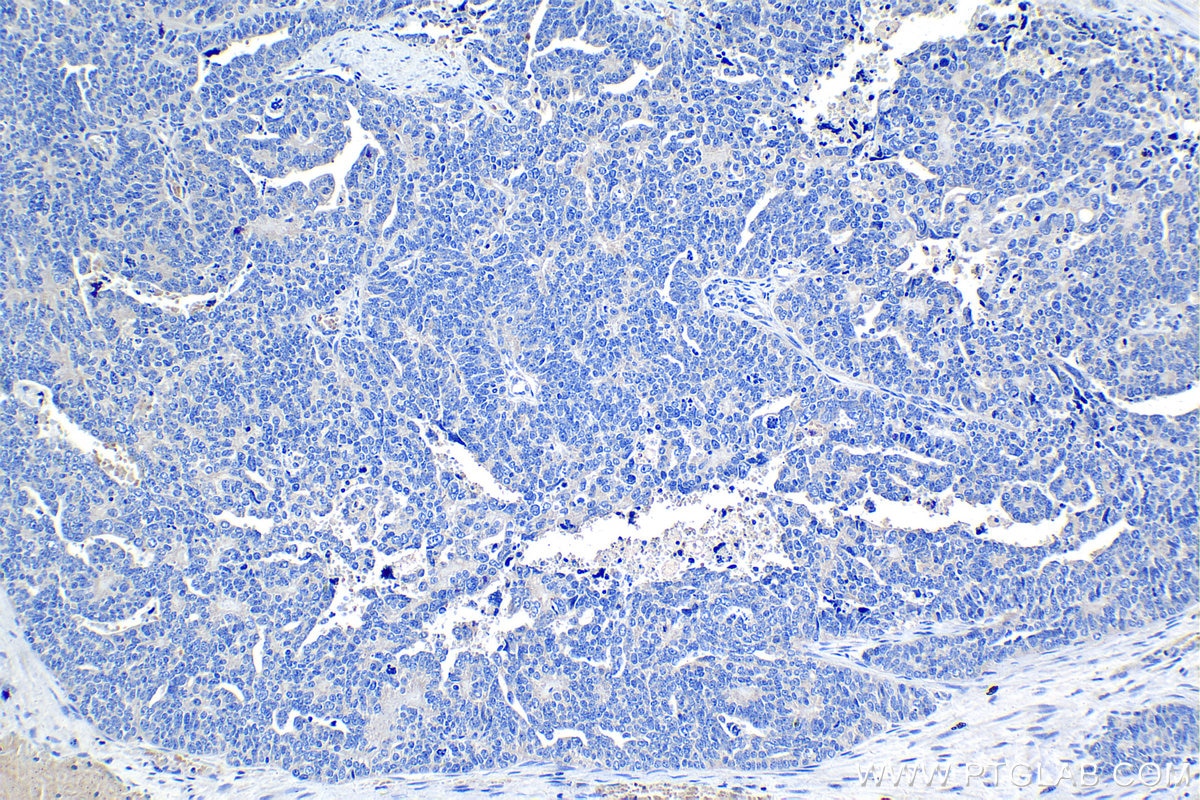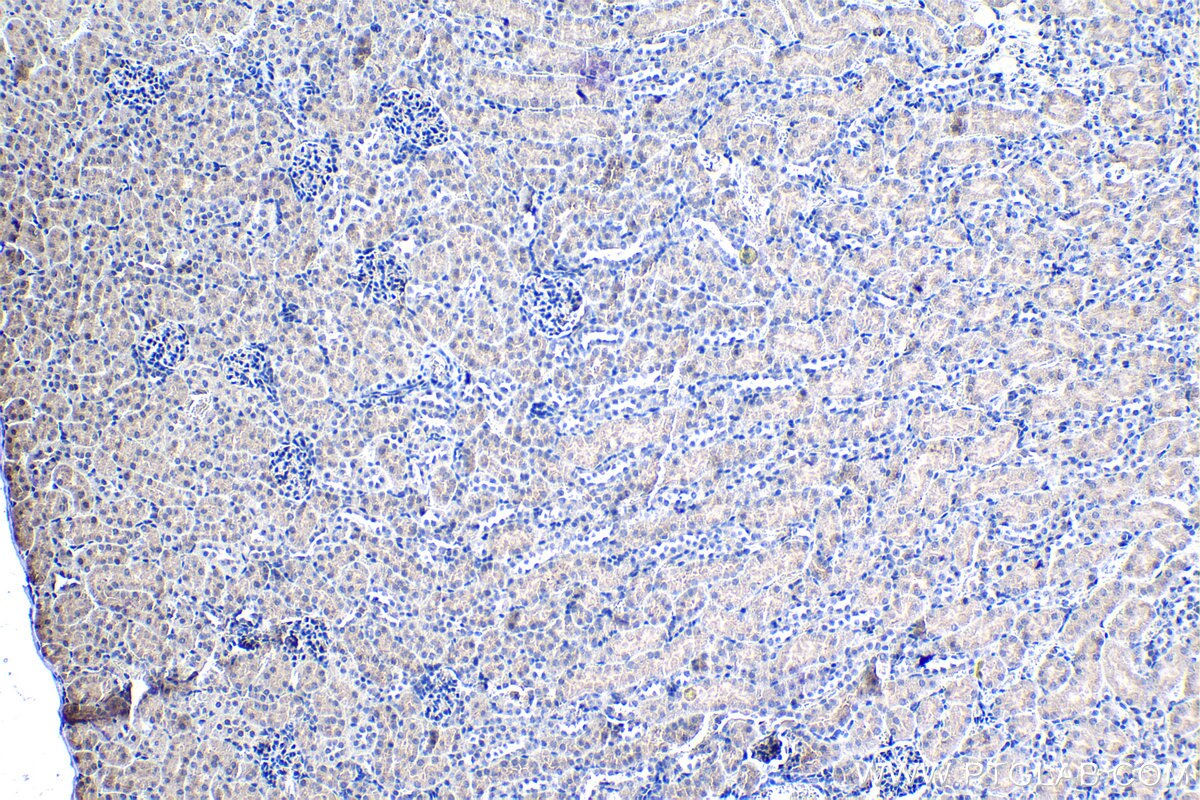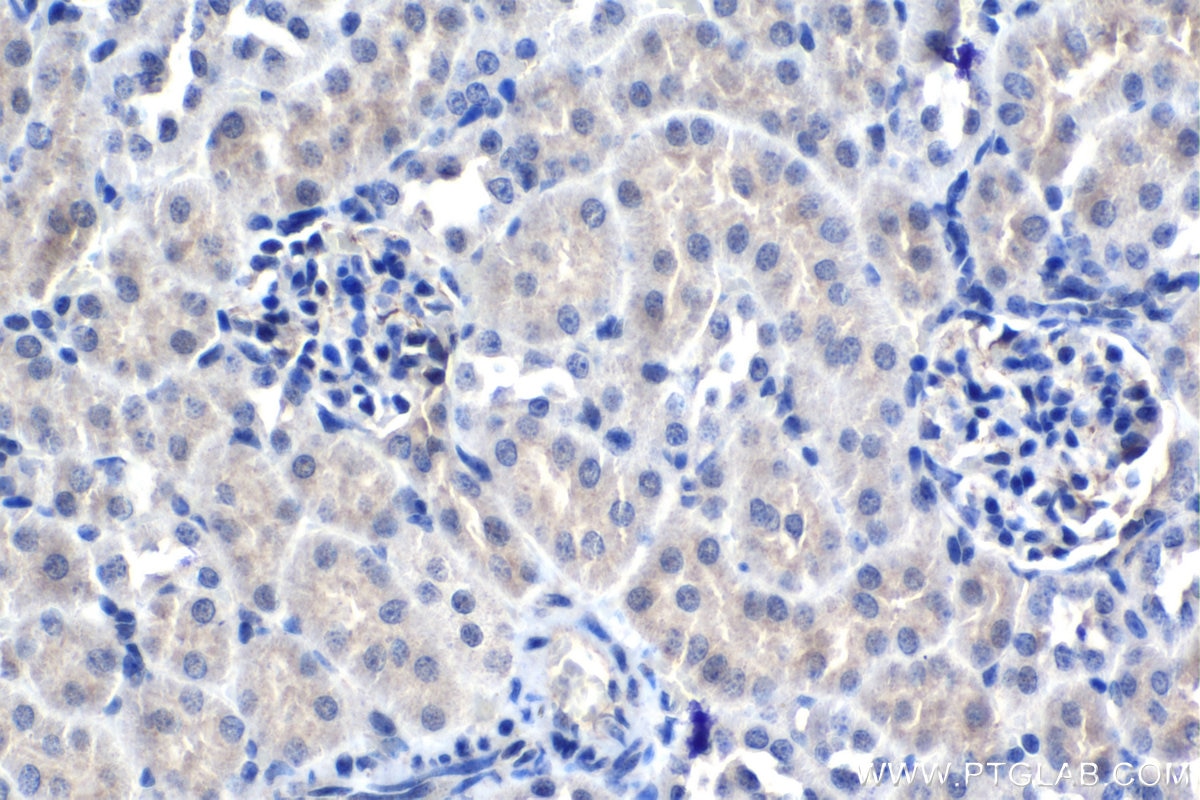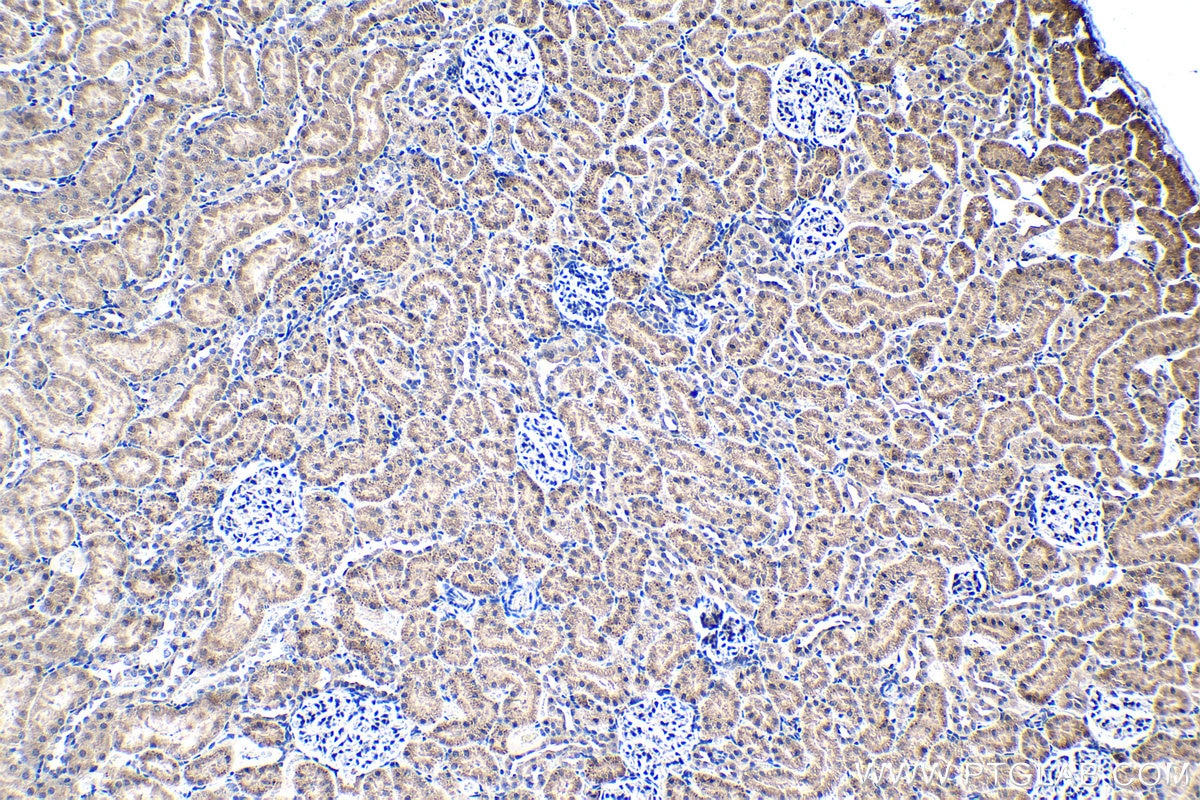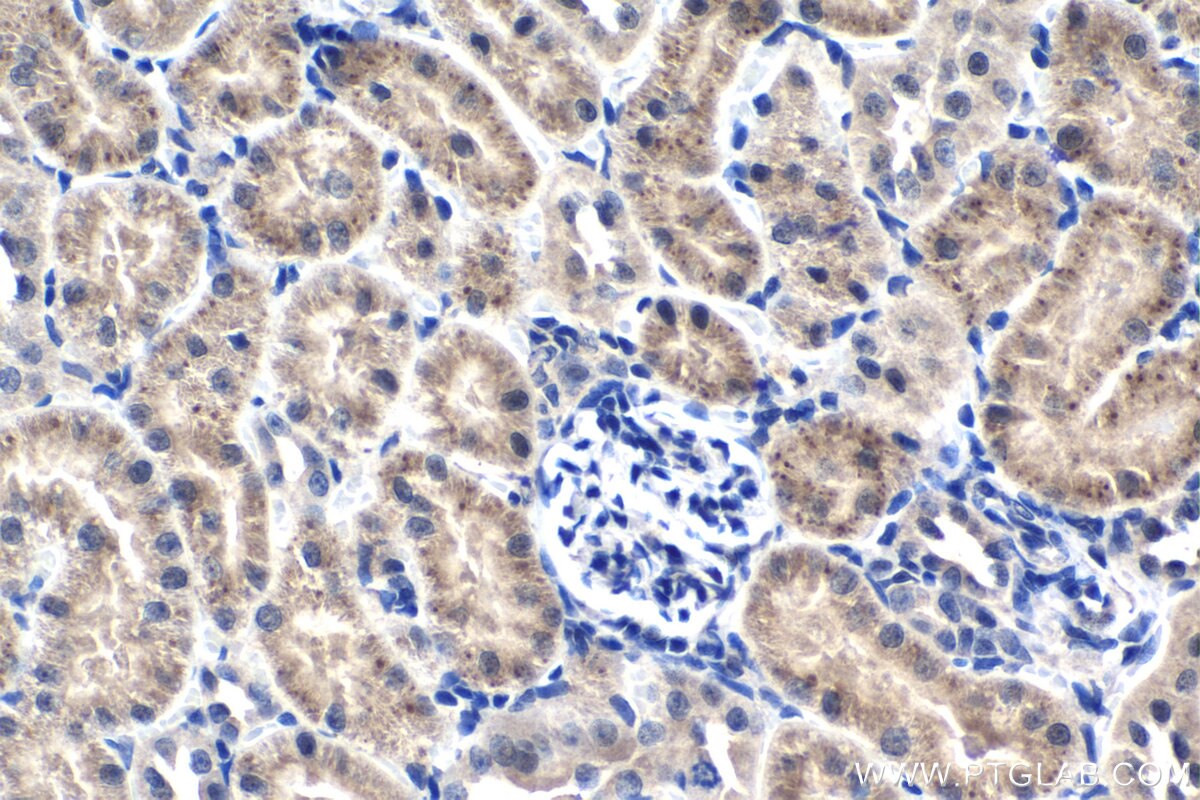Tested Applications
| Positive WB detected in | NIH/3T3 cells |
| Positive IHC detected in | rat kidney tissue, human cervical cancer tissue, human ovary tumor tissue, mouse kidney tissue Note: suggested antigen retrieval with TE buffer pH 9.0; (*) Alternatively, antigen retrieval may be performed with citrate buffer pH 6.0 |
Recommended dilution
| Application | Dilution |
|---|---|
| Western Blot (WB) | WB : 1:500-1:1000 |
| Immunohistochemistry (IHC) | IHC : 1:250-1:1000 |
| It is recommended that this reagent should be titrated in each testing system to obtain optimal results. | |
| Sample-dependent, Check data in validation data gallery. | |
Published Applications
| KD/KO | See 1 publications below |
| WB | See 7 publications below |
| IHC | See 3 publications below |
| IF | See 2 publications below |
Product Information
13321-1-AP targets TSG-6 in WB, IHC, IF, ELISA applications and shows reactivity with human, mouse, rat samples.
| Tested Reactivity | human, mouse, rat |
| Cited Reactivity | human, mouse, rat |
| Host / Isotype | Rabbit / IgG |
| Class | Polyclonal |
| Type | Antibody |
| Immunogen | TSG-6 fusion protein Ag3885 Predict reactive species |
| Full Name | tumor necrosis factor, alpha-induced protein 6 |
| Calculated Molecular Weight | 277 aa, 31 kDa |
| Observed Molecular Weight | 39 kDa |
| GenBank Accession Number | BC030205 |
| Gene Symbol | TNFAIP6 |
| Gene ID (NCBI) | 7130 |
| RRID | AB_2204641 |
| Conjugate | Unconjugated |
| Form | Liquid |
| Purification Method | Antigen affinity purification |
| UNIPROT ID | P98066 |
| Storage Buffer | PBS with 0.02% sodium azide and 50% glycerol, pH 7.3. |
| Storage Conditions | Store at -20°C. Stable for one year after shipment. Aliquoting is unnecessary for -20oC storage. 20ul sizes contain 0.1% BSA. |
Background Information
TSG-6 was first discovered by Lee when screening the cDNA expression library of human fibroblasts interfered by TNF-α. TSG-6 is expressed in normal fibroblasts, peripheral blood mononuclear cells, synovial cells and chondrocytes. It is constitutively expressed in tissue cells with immune barrier, high basal metabolism level and differentiation potential (such as mesenchymal stem cells), but it is usually not expressed in normal tissue cells, but can be induced by inflammatory mediators. TSG-6 has the functions of anti-inflammation, extracellular matrix remodeling and local microenvironment protection. It plays an important role in the repair of joint inflammation by binding with various ligands, including glycosaminoglycan, proteoglycan core protein and other matrix components, and directly binding with various chemokines and bone morphogenetic proteins. TSG-6 has shown anti-inflammatory effects in many diseases, including skin wound closure, pancreatitis, conjunctivitis, neuritis, intestinal ischemia-reperfusion injury, liver fibrosis, acute myocardial infarction and so on. It is the secreted protein product of tumor necrosis factor-stimulating gene-6 (TSG-6) with a molecular mass of about 35-38 kDa.(PMID: 34707499)
Protocols
| Product Specific Protocols | |
|---|---|
| WB protocol for TSG-6 antibody 13321-1-AP | Download protocol |
| IHC protocol for TSG-6 antibody 13321-1-AP | Download protocol |
| Standard Protocols | |
|---|---|
| Click here to view our Standard Protocols |
Publications
| Species | Application | Title |
|---|---|---|
JACC Basic Transl Sci Atheroprotective Effects of Tumor Necrosis Factor-Stimulated Gene-6. | ||
Front Pharmacol TSG-6 Inhibits Oxidative Stress and Induces M2 Polarization of Hepatic Macrophages in Mice With Alcoholic Hepatitis via Suppression of STAT3 Activation. | ||
Neurochem Res Tumor Necrosis Factor-stimulated Gene-6 (TSG-6) Secreted by BMSCs Regulates Activated Astrocytes by Inhibiting NF-κB Signaling Pathway to Ameliorate Blood Brain Barrier Damage After Intracerebral Hemorrhage. | ||
Contrast Media Mol Imaging TNFAIP6 Promotes Gastric Carcinoma Cell Invasion via Upregulating PTX3 and Activating the Wnt/β-Catenin Signaling Pathway
| ||
Neural Regen Res Tumor necrosis factor-stimulated gene-6 ameliorates early brain injury after subarachnoid hemorrhage by suppressing NLRC4 inflammasome-mediated astrocyte pyroptosis | ||
Front Immunol Neutrophil infiltration associated genes on the prognosis and tumor immune microenvironment of lung adenocarcinoma |
